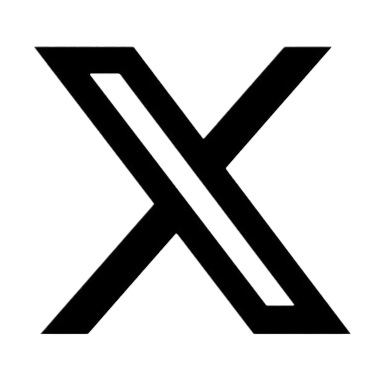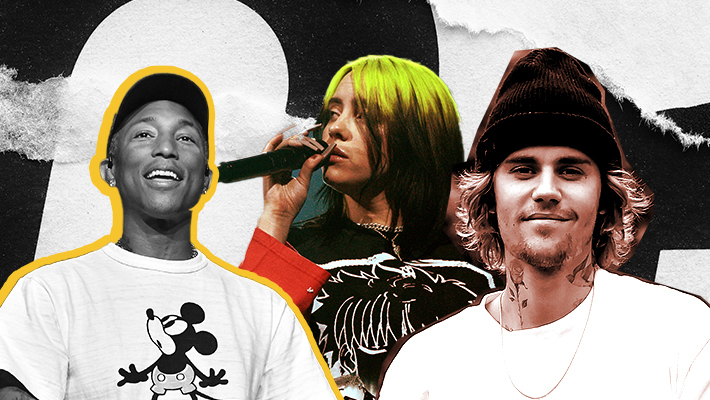From the rise of the internet, to political and social issues creating a more self-aware society, it’s safe to say that the world has experienced extraordinary shifts in the past 10 years.
Keeping this in mind, it’s not surprising that the music scene would also undergo changes in more ways than one. Each year, music’s biggest hits have carried a distinct style of production which becomes widely emulated, or a theme echoing hot-button topics of conversation. Additionally, industry advancements such as streaming and album bundling have changed the way music is consumed. And of course, social media places the power in the fans’ hands, helping to distinguish who tops the charts.
Ready to take a trip down memory lane? Read on as we look back at some of the biggest music trends and industry changes of the last decade.
2011
In 2011, the sounds of electropop — a hodge-podge of pop, EDM, techno, and dubstep — wash over the industry. Ordinarily viewed as just the “sound guys,” EDM producers Calvin Harris and David Guetta garner top billing with collaborations like Chris Brown’s “Yeah 3X” and “Titanium” featuring Sia. Pop stars like Pitbull and Britney Spears keep fans on the dance floor with EDM-tinged hits “Give Me Everything” and “Til The World Ends.” Kanye West, Jay-Z, and duo LMFAO also combine the electronic sound with their hip-hop and rap-heavy work, evident by Watch The Throne’s “I Can’t Stop” and LMFAO’s “Party Rock Anthem.”
In addition to getting people moving, pop music carries conceptual introspection during this time. This year not only births Adele’s stunning 21, but self-love anthems “Born This Way” by Lady Gaga and “Raise Your Glass” by Pink. Rap — which continues to rise in popularity amongst teens and college-students — also features songs about complex emotions (Lil Wayne’s “How To Love”), pushing through adversity (Lupe Fiasco’s “The Show Goes On”), and life challenges (Diddy-Dirty Money’s “Coming Home”).
2012
In a near-180 from the previous year, alternative rock and indie pop reigns supreme. Gotye’s “Somebody That I Used To Know” is the year’s best-selling song, and the band Fun dominates critically and commercially with their album Some Nights, lead by “We Are Young.” Neon Trees, Bon Iver, Alabama Shakes, and Mumford and Sons break new ground with their respective projects and accolades.
Internet virality (a trend which won’t be uncommon in the years to come) also goes to new heights. “Somebody That I Used To Know” sees a slew of covers and music video parodies upon its release, while Carly Rae Jepsen’s “Call Me Maybe” becomes an internet sensation. South Korean artist PSY’s “Gangnam Style” is so popular, it results in a change to how songs are considered for Billboard’s Hot 100 chart. Per the Harvard Business Review, tracking “listens” through YouTube videos now factors into the chart’s ranking methodology.
2013
In 2013, top-notch production is the name of the game. Hit tunes are balanced between show-stopping sounds (Macklemore and Ryan Lewis’ “Thrift Shop,” Avicii’s “Wake Me Up”), nostalgic instrumentation (Daft Punk’s “Get Lucky,” Robin Thicke’s “Blurred Lines,” Bruno Mars’ “Treasure”), and minimalist stylings (The Lumineers’ “Ho Hey,” Lorde’s “Royals”).
This year also marks the beginning of the end for digital singles and iTunes in favor of streaming, and emphasis on “vintage” ways of buying music (vinyl), which decreases the importance of CDs and pure album sales. Per Billboard, “digital track sales fell 5.7 percent from 1.34 billion units to 1.26 billion units, while digital album sales fell 0.1 percent to 117.6 million units from the previous year’s total of 117.7 million.” Non-traditional album and CD merchants like Starbucks, Urban Outfitters, and Amazon see an increase to 36.5 million units sold, in comparison to the dwindling sales of indie merchants (a drop of nearly 12 percent).
2014
While empowerment pop has always been popular, uplifting themes of self-confidence carry 2014. Children and adults enjoy songs that make them feel seen and accepted for who they are. Kids gravitate to Despicable Me 2’s “Happy” (performed by Pharrell Williams), while members of the LGBTQ+ community christen a new anthem with Ariana Grande’s “Break Free.” Taylor Swift’s new pop-heavy sound also provides a message for haters: “Shake It Off.”
Songs about body positivity are also popular. The surprise drop of Beyoncé’s fifth studio album in winter 2013 gives listeners a new catchphrase for 2014 — “I Woke Up Like This” from her song “***Flawless.” Nicki Minaj and pop star Megan Trainor drop songs about pride in their prominent posteriors with “Anaconda” and “All About That Bass.”
2015
Electronic dance music is taking over the scene again. This time, a recognizable characteristic — the drop — is center stage. This sudden change in sound or rhythm is central to hit songs both by EDM-leaning producers (Major Lazer’s “Lean On,” DJ Snake’s “You Know You Like It,” Calvin Harris’ “How Deep Is Your Love”), and pop stars (The Weeknd’s “I Can’t Feel My Face,” Demi Lovato’s “Cool For The Summer,” Zara Larsson’s “Never Forget You”). The trend continues into 2017.
This year also kicks off the re-emergence of viral dance crazes, which continues into 2021. Bruno Mars and Mark Ronson steal the show with “Uptown Funk,” while Drake becomes a meme for his moves in “Hotline Bling.” Silento’s “Watch Me (Whip, Nae Nae)” and iLoveMemphis’ “Hit The Quan” become fixtures on and offline.
2016
Dancehall and Caribbean-inspired tracks are a mainstay in 2016 pop. While Justin Bieber’s “Sorry” was released at the tail-end of 2015, it is the biggest song of 2016, per Billboard. Drake leans into this craze with his hits “One Dance” and “Too Good.” The latter is a collaboration with Bajan musician Rihanna, who drops a whine-inducing ditty, “Work,” also featuring Drake.
Additionally, Ariana Grande, Sia, and Clean Bandit create hit songs with island flavor: “Side To Side,” “Cheap Thrills,” and “Rockabye,” respectively. This trend continues until at least 2019, however, as conversations of cultural appropriation of Black music heat up, these sounds taper off. Per The Observer, modern dancehall music has always been appropriated. Reggae/dancehall superstar Sean Paul says in the interview: “It is a sore point when people like Drake or Bieber or other artists come and do dancehall-orientated music but don’t credit where dancehall came from and they don’t necessarily understand it.”
2017
R&B/hip-hop surpasses rock music as the most-listened to genre on the planet, per Nielsen Music. Its supremacy becomes exceedingly evident in 2017 with the takeover of the trap sound—classified by heavy bass, atmospheric sound and brash attitude. Migos, Future, and Rae Sremmurd’s popularity soars with trap hits “Bad And Boujee,” “Mask Off,” and “Black Beatles,” while social media superstar Cardi B breaks the mold with her major-label debut single, “Bodak Yellow.” Soundcloud-style trap rap, which employs a more ethereal, trippy sonic inspiration, is found in Post Malone’s “Congratulations” and Lil Uzi Vert’s “XO Tour Life.” The trend continues into 2018 with Juice Wrld’s “Lucid Dreams.”
Given a tepid national climate, songs featuring socially-conscious and self-aware themes become popular. Rapper Logic’s experiences with depression prompt him to pen the rap/sung collaboration “1-800-273-8255,” which increased calls to the National Suicide Prevention Lifeline by more than 30 percent. Alessia Cara, a featured artist on Logic’s song, releases her self-love anthem “Scars To Your Beautiful.” Kesha drops “Praying” in the hopes that the abused and their abusers can heal. The song was written in response to the alleged sexual assault and emotional abuse she’s experienced at the hands of producer Dr. Luke.
2018
Due to the success of Luis Fonsi’s monster hit “Despacito” the year prior, it’s no surprise that Latin pop and hip-hop completely command the airwaves in 2018. J. Balvin’s “Mi Gente” and Camila Cabello’s “Havana” were released in 2017 and continue to have chart success this year. Cardi B’s Latin-heavy rap track “I Like It” hits No. 1 on the Billboard Hot 100 charts, while Becky G, Marc Anthony, Will Smith, and Bad Bunny drop “Mala Mia” and “Esta Rico,” respectively.
2018’s crossover collaborations also find unexpected success. Zedd and Maren Morris’ ‘The Middle” receive Record and Song of the Year nominations at the 61st Grammy Awards. Florida Georgia Line and Bebe Rexha’s “Meant To Be” hits No. 2 on the Hot 100 chart, and DJ Snake’s “Taki Taki” featuring Selena Gomez, Cardi B, and Ozuna reaches one billion streams on Spotify.
2019
The theme of 2019 is that…there is no theme. Genreless music — sounds that fit an artist’s mood, vibe, or idea without boundaries or confines — encapsulates the music world. Newcomers Billie Eilish and Lil Nas X shatter expectations with “Bad Guy,” (an electropop, hip-hop-flavored dance track) and “Old Town Road” (a record-breaking country trap hit). Music superstars Ariana Grande and Tyler The Creator also take part in the sonic shattering. Her song “7 Rings” pairs Broadway with trap, while his song “Earfquake” combines R&B, hip-hop, and soul.
Self-love anthems also make major comeback, and highlight the various levels of self-acceptance. Panic! At The Disco’s “High Hopes” is about self-confidence. Self-love and exploration is the base for Selena Gomez’s “Lose You To Love Me” and Ariana Grande’s “Thank U Next,” which was popular in 2018 as well. Through her album Because I Luv You, Lizzo proves that spreading positivity is her M.O.
2020
Nothing captures 2020 in music quite like social media’s reign over the charts. TikTok, a popular video creation app, is the place for viral dance crazes to take over. Routines to Doja Cat’s “Say So” and Megan Thee Stallion’s “Savage” boost their popularity, while the dedication of Internet stans catapults Lady Gaga and Ariana Grande’s “Rain On Me” and BTS’ “Dynamite” to the top of the charts.
Despite strict social distancing rules in the age of COVID-19, dancefloor-ready tunes are an undeniable trend. Dua Lipa rules the year with her album Future Nostalgia, and “Say So” carries palpable ’70s-inspired energy. Other disco-tinged hits include Jessie Ware’s “Remember Where You Are,” Kylie Minogue’s “Say Something,” and Victoria Monet’s album Jaguar.
2021
There haven’t been too many distinguishing music trends as of late. (Especially since it feels like we’re still in 2020.) However, it appears that budding music stars are about to make their mark.
Since the beginning of 2021, singer-songwriter Olivia Rodrigo’s song “Drivers License” has been on top of the charts, and “Mood” by 24kGoldn and Iann Dior has held the second seed position for several weeks. Relative newcomers may also find success if they continue to collaborate with major stars, such as singer-songwriter Jhay Cortez with “Dakiti” (his collaboration with Bad Bunny), and rapper Yung Bleu with “You’re Mines Still” (his link-up with Drake).
Some artists covered here are Warner Music artists. Uproxx is an independent subsidiary of Warner Music Group.





